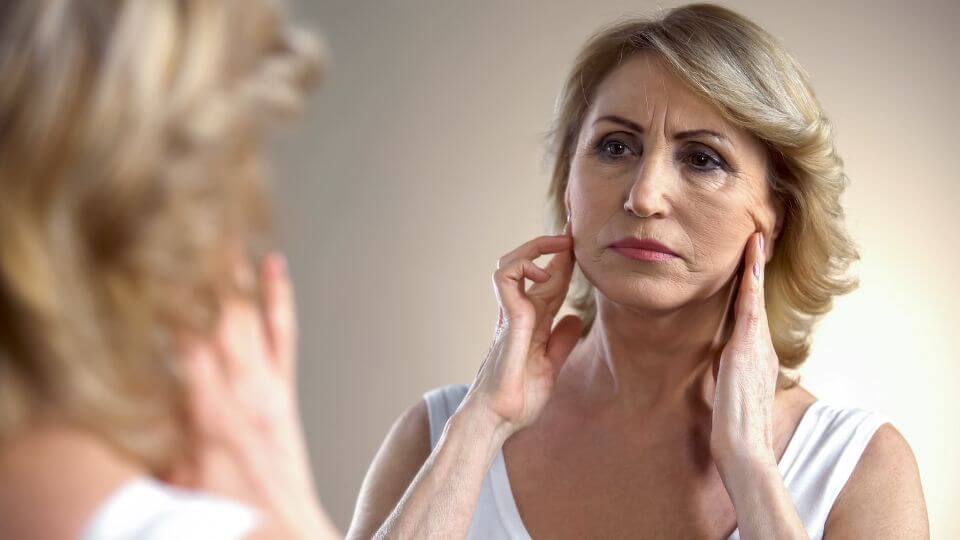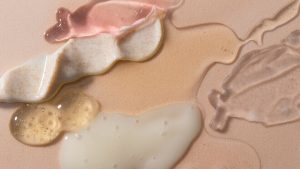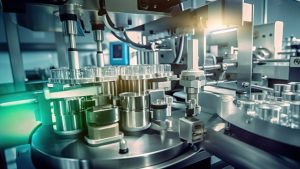
Tired of increasingly noticeable signs of ageing skin? Fine lines, age spots, and sallow skin can disproportionately worsen some years. What was once a subtle change may now feel like an unavoidable trajectory.
While ageing skin is an inevitable part of life, understanding the mechanisms behind it is just as important as treating it—because the right knowledge, paired with targeted treatment can renew much of your youthful glow and reduce long-term need for invasive procedures.
With an ever-increasing selection of anti-ageing skincare products available both in-store and online, it is easy to feel overwhelmed.
In this article, we run through the key facts about ageing skin, as well as the must-know hacks to make your topical treatment stand out in a crowded marketplace.
Overview
Ageing skin is a gradual process beginning around the age of 25 and tends to accelerate in the 40’s, and again in the 70’s.
Women’s skin often intrinsically ages faster, while men are more affected by extrinsic factors.
People with lighter skin tones tend to show wrinkles more visibly, while those with darker skin tones develop more hyperpigmentation.
The visible symptoms of ageing skin include fine lines and wrinkles, hyperpigmentation, thinning and loss of volume, and dry skin—impacting different areas of the body with varying extents.
The face and neck show the most signs of ageing. It also affects the arms and legs more than other parts of the body.
Ageing skin occurs through dual mechanisms:
| Subtype | Description | Common Areas |
| Intrinsic Ageing (chronological) | Normal course of ageing, closely linked to the biological clock and the passage of time | Entire body |
| Extrinsic Ageing (photoageing) | Premature ageing caused by external factors, which accelerates intrinsic ageing | Face, neck, arms, and legs |
Up to 80% of ageing skin symptoms are attributed to extrinsic factors.
While intrinsic ageing cannot be prevented, reducing extrinsic ageing is becoming increasingly possible.
Causes
Ageing skin is caused by the skin’s decline in its ability to regenerate key structural molecules like collagen and elastin.
The causes of intrinsic ageing are:
| Cause | Description |
| Genetics | Genetics influence the rate at which cells replicate, repair, and respond to environmental stress. Mutations or variations in specific genes can accelerate cellular breakdown |
| Cellular | Cellular replication lasts about 50 cycles before genetic material can no longer be accurately copied. As senescent (ageing) cells accumulate and damage increases, the skin thins, loses elasticity, and become more fragile. Collagen, which gives skin structure and elasticity, declines by 1% each year after the age of 25. Elastin fibres, which help the skin return to its original shape after stretching, also diminish over time, making the skin looser and less resilient |
| Hormones | Hormones, particularly oestrogen and testosterone, decline with age, reducing skin elasticity and moisture, causing visible signs of ageing skin |
The extrinsic factors that accelerate ageing skin include:
| Contributor | Description |
| Photoageing | Photoageing, caused by UV (ultraviolet) radiation, particularly between 11am and 3pm, and the use of tanning beds, causes thousands of DNA alterations in skin cells every day. This accelerates the breakdown of collagen and elastin fibres |
| Nutrition | Nutrition, including diets high in sugar and processed foods can cause glycation, where these molecules bond with collagen. This, as well as a lack of hydration reduces flexibility |
| Medications | Medications, such as immunosuppressive agents, along with immune deficiency diseases and the psychological stress they treat, can accelerate cellular damage and diminish skin resilience |
| Smoking | Smoking, particularly nicotine, constricts blood vessels, reducing blood flow and limiting the oxygen and nutrients that reach skin cells |
| Alcohol | Alcohol, when consumed excessively, dehydrates and damages the skin, depleting it of essential moisture and nutrients |
| Skincare | Skincare becomes increasingly important as the natural exfoliation process slows down with age. Failure to cleanse properly can lead to a buildup of dead skin cells, oil, and dirt |
| Environment | Pollution, such as smoke, can clog pores and cause inflammation. Harsh working conditions and chronic stress can have an adverse effect on hormonal levels and skin health |
Understanding these extrinsic factors, especially sun exposure, is crucial for preventing premature ageing skin.
Diagnosis
Monderma determines the extent of premature ageing by examining exposed areas of the skin to identify its underlying causes.
The normal course of ageing includes predictable symptoms that develop over time:
| Age | Symptoms | Description |
| 25-30 | Fine lines on the forehead and around the eyes. | The skin begins to thin, reducing its barrier function and natural UV protection. Collagen mass and flexibility starts to deplete by about 1% per year. |
| 30’s | Fine lines on the cheeks, around the mouth, and on the neck, with mild hyperpigmentation. | The skin’s barrier function weakens, cell metabolism slows, and hyaluronic acid production declines, increasing moisture loss, and the first effects of sun damage from teenage years and the 20’s start to appear. |
| 40’s | Moderate wrinkles on the forehead, around the eyes, cheeks, and mouth, as well as dull, and dry skin, and reduced volume in the cheeks and neck. | Outer skin layers no longer lie in their proper order, resulting in a more pronounced dull appearance. Existing skin cells shrink, and fewer new cells are formed, reducing skin volume. |
| 50’s | Thinner, less elastic skin, with moderate hyperpigmentation. | Connective tissues in the skin’s middle layer lose their fibrous structure and ability to retain water. Fat tissue in the lower layer thins. |
| 60’s | Deep wrinkles, sagging, and significantly dry skin. | The skin’s natural lipid production declines, as does the production of collagen and hyaluronic acid, resulting in deeper wrinkles and slower skin regeneration. The skin becomes more fragile and prone to dry skin. |
| Over 70 | Impaired wound healing and severe hyperpigmentation. | The skin’s immune function weakens significantly, making it more vulnerable to infection. Wound healing slows, and hyperpigmentation becomes more severe due to prolonged exposure to environmental factors. |
Treatment
While intrinsic ageing cannot be prevented, extrinsic ageing can be addressed through skincare treatment. Monderma’s custom formula includes up to 3 of the following types of active ingredients:
| Topical Ingredient | Properties |
| Retinoids | Retinoids, such as tretinoin and adapalene, promote skin cell turnover to reduce pore size, clear spots, and smooth fine lines. |
| Lightening Agents | Lightening agents, in particular hydroquinone, reduce the production of melanin to lighten patches of darker skin. |
| Anti-Inflammatories | Anti-inflammatories, including azelaic acid, inhibit inflammation-causing molecules to reduce redness, calm inflammation, and lighten patches of darker skin. |
| Antioxidants | Antioxidants, like niacinamide, repair and strengthen the barrier function of the skin to lock in moisture and improve suppleness. |
Daily use of broad-spectrum sunscreen with SPF30 or higher is essential for ageing skin treatment. Lasting results typically take at least 8 weeks to appear, so it is important to follow a treatment plan.
Complications
As the skin ages, cumulative damage from both intrinsic and extrinsic factors result in a series of changes that affect its appearance and function. These changes are visible in several forms:
| Complication | Description |
| Fine Lines And Wrinkles | Dynamic wrinkles, such as frown lines, crow’s feet, and laugh lines, are most noticeable when the muscles beneath them are active due to repeated facial movements. Static wrinkles, like forehead lines, cheek wrinkles, and marionette lines, are present even when the face is at rest. Gravitational wrinkles, including jowls and neck wrinkles, appear where the skin begins to sag as it loses elasticity. Atrophic wrinkles are fine lines resulting from decreased skin thickness and elasticity. Compression wrinkles, such as sleep lines, form due to external pressure on the face. |
| Thinning And Fragility | Thinning skin becomes more fragile and prone to injury as it loses its protective cushioning. This increases the risk of wounds, tears, and bruising, while slower healing from impaired cell regeneration and a weakened vascular network, further increasing the risk of infection. Loss of fat tissue beneath the skin leads to a hollowed appearance, especially around the temples and cheeks. |
| Dull Skin | Dull skin is often the first visible symptom of ageing skin. Reduced ability to shed dead skin cells and generate new ones leads to a buildup of cells on the surface and a lacklustre complexion. Limited blood flow reduces oxygen and nutrient delivery, further diminishing vibrancy. Without the ability to reflect light effectively, ageing skin appears matte and flat, making pores and pigmentation more noticeable. |
| Dry Skin | Dry skin becomes more common with age as the skin’s ability to retain moisture and produce natural oils declines. Sebaceous gland activity decreases, weakening the protective lipid barrier and increasing dry skin. Reduced hyaluronic acid production leads to moisture loss from deeper layers of the skin, resulting in a rough, flaky texture that can cause irritation and itching. |
| Hyperpigmentation | Hyperpigmentation is often caused by slower cell turnover, hormonal changes, inflammation, and cumulative sun damage. Dark spots and uneven pigmentation become more pronounced as the skin’s ability to renew itself diminishes with age. |
| Rosacea | Rosacea becomes more common as the skin ages. Blood vessels near the surface become more visible and susceptible to dilation and damage. The skin’s reduced ability to repair itself and control inflammation increases the likelihood of developing or exacerbating redness and sensitivity. |
| Psychosocial | Psychosocial factors related to early physical changes in appearance and societal attitudes toward ageing skin can negatively affect self-esteem, particularly in those in their 30’s and 40’s. |
Understanding and managing these complications is essential for treating ageing skin and promoting overall wellbeing as one ages.
In Conclusion
Ageing skin is the result of a combination of intrinsic and extrinsic factors. While it is a natural part of life, advances in prescription skincare offer effective ways to manage and mitigate its effects to great effect.
By understanding the mechanisms of ageing skin and adopting effective treatment, you can improve both overall skin appearance and function. Take control today by completing Monderma’s short, free online skin consultation to see if prescription skincare would be right for you.










